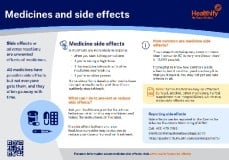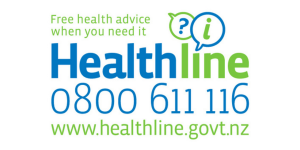Galvumet
Also called vildagliptin + metformin
Key points about Galvumet
- Galvumet is used to treat type 2 diabetes.
- Galvumet is also called vildagliptin + metformin.
- Find out how to take it safely and the possible side effects.

Galvumet is a combination of two medicines, vildagliptin and metformin, in a single tablet. Note: Vildagliptin on its own is called Galvus – read more about Galvus.
Galvumet is used to treat type 2 diabetes. Galvumet helps to control blood glucose levels by making your pancreas produce more insulin and less glucagon (effect of vildagliptin) and also by helping your body to make better use of the insulin it produces (effect of metformin). Read more about type 2 diabetes.
In Aotearoa New Zealand Galvumet is available as tablets in 2 strengths – Galvumet 50/850 mg and Galvumet 50/1000 mg.
- Always take your Galvumet exactly as your healthcare provider has told you. The pharmacy label on your medicine will tell you how much to take, how often to take it, and any special instructions.
- Check with your healthcare provider or pharmacist which strength you're taking.
- The usual dose of Galvumet is 1 tablet twice a day.
- Timing: Take Galvumet twice a day, in the morning and the evening. Try to take your doses at the same times each day, to help you remember to take it.
- Swallow your tablets whole with a drink of water: Take Galvumet with food – during a meal or just after a meal. This helps to reduce side effects.
- Missed dose: If you forget your dose, take it as soon as you remember that day. But, if it's nearly time for your next dose, just take the next dose at the right time. Do not take double the dose.
- Stay well hydrated: Make sure you drink enough water and stay well hydrated while you're taking Galvumet.
- Limit or avoid alcohol while you are taking Galvumet: Alcohol may affect your blood glucose control and increase your risk of side effects such as nausea, dizziness and lactic acidosis. Read more about diabetes and alcohol.
- Keep taking Galvumet regularly: To control your diabetes, you must keep taking Galvumet every day. Do not stop taking Galvumet suddenly – speak to your healthcare provider before stopping.
Here are some things to know when you're taking Galvumet. Other things may be important as well, so ask your healthcare provider what you should know about.
Have a sick day plan for when you're unwell
If you have diarrhoea (runny poo) or are vomiting (being sick) from a stomach bug, or are dehydrated, it’s important to let your healthcare provider know, as they may advise you to stop taking Galvumet for a few days and start again when you're eating and drinking normally. Read more about having a diabetes sick day plan.
Taking other medicines
Galvumet can interact with some medicines, herbal supplements and rongoā Māori, so check with your healthcare provider or pharmacist before starting Galvumet and before starting any new products.
Having surgery (operation)
You may need to stop taking Galvumet before having major surgery and some medical tests. Galvumet may affect the dye used for an X-ray or CT scan. Let your healthcare team know that you're taking Galvumet.
Blood tests and monitoring
You’ll have regular blood tests to check how well your Galvumet is working and to check your liver and kidneys.
If you're pregnant, trying for a baby or breastfeeding
It's important to talk to your healthcare provider as soon as possible if you're trying to get pregnant, are pregnant (hapū) or breastfeeding. You may need to change to another medicine.
Like all medicines, Galvumet can cause side effects, although not everyone gets them. If you're concerned about any symptoms you think might be related to your medicine, talk to your healthcare provider. The following information offers some guidance but doesn't include all possible side effects.
Common side effects
- Nausea (feeling sick) – take your dose with food.
- Dizziness.
- Runny nose, congestion, sneezing.
- Headache.
- Joint or back pain.
- Diarrhoea (runny poo).
- Constipation.
Tell your healthcare provider immediately or phone Healthline free on 0800 611 116 if these occur
- Skin rash, itching, or blisters.
- Swollen hands or feet.
- Signs of problems with your pancreas such as ongoing and severe stomach (tummy) pain.
- Signs of problems with your liver such as tummy pain, skin and eyes turning a yellow colour, itchy skin, pee is a dark colour, poo is a pale colour.
- Signs of low vitamin B12 such as extreme tiredness, a sore and red tongue, mouth ulcers, pins and needles or pale or yellow skin. Diabetes and long-term metformin can cause low levels of vitamin B12. You may need to have a blood test to check vitamin B12 if you have symptoms and you may need to take a supplement for this.
- Signs of lactic acidosis such as loss of appetite, nausea, vomiting, stomach cramps, tiredness, diarrhoea and muscle pain. This is very rare and you're at higher risk if you have kidney problems, a severe infection, dehydration, heart failure or drink a lot of alcohol.
Read more about medicines and side effects and reporting a reaction you think might be a side effect.
Galvumet(external link) Medsafe Consumer Information, NZ
Vildagliptin and metformin patient information(external link) NZ Formulary, NZ
Brochures
5 questions to ask about your medications(external link) Health Quality and Safety Commission, NZ, 2019 English(external link), te reo Māori(external link)
Medicines and side effects [PDF, 91 KB] Healthify He Puna Waiora, NZ, 2024
References
- Vildagliptin + metformin (external link)NZ Formulary, NZ
- Prescribing vildagliptin for type 2 diabetes (external link)BPAC, NZ, 2021
- Possible risk of vasculitis with vildagliptin products (Galvus, Galvumet) (external link)Medsafe, NZ, 2022
Brochures

Medicines and side effects
Healthify He Puna Waiora, NZ, 2024

Health Quality and Safety Commission, NZ, 2019 English, te reo Māori
Credits: Healthify He Puna Waiora Pharmacists. Healthify is brought to you by Health Navigator Charitable Trust.
Reviewed by: Angela Lambie, Pharmacist, Auckland
Last reviewed:





